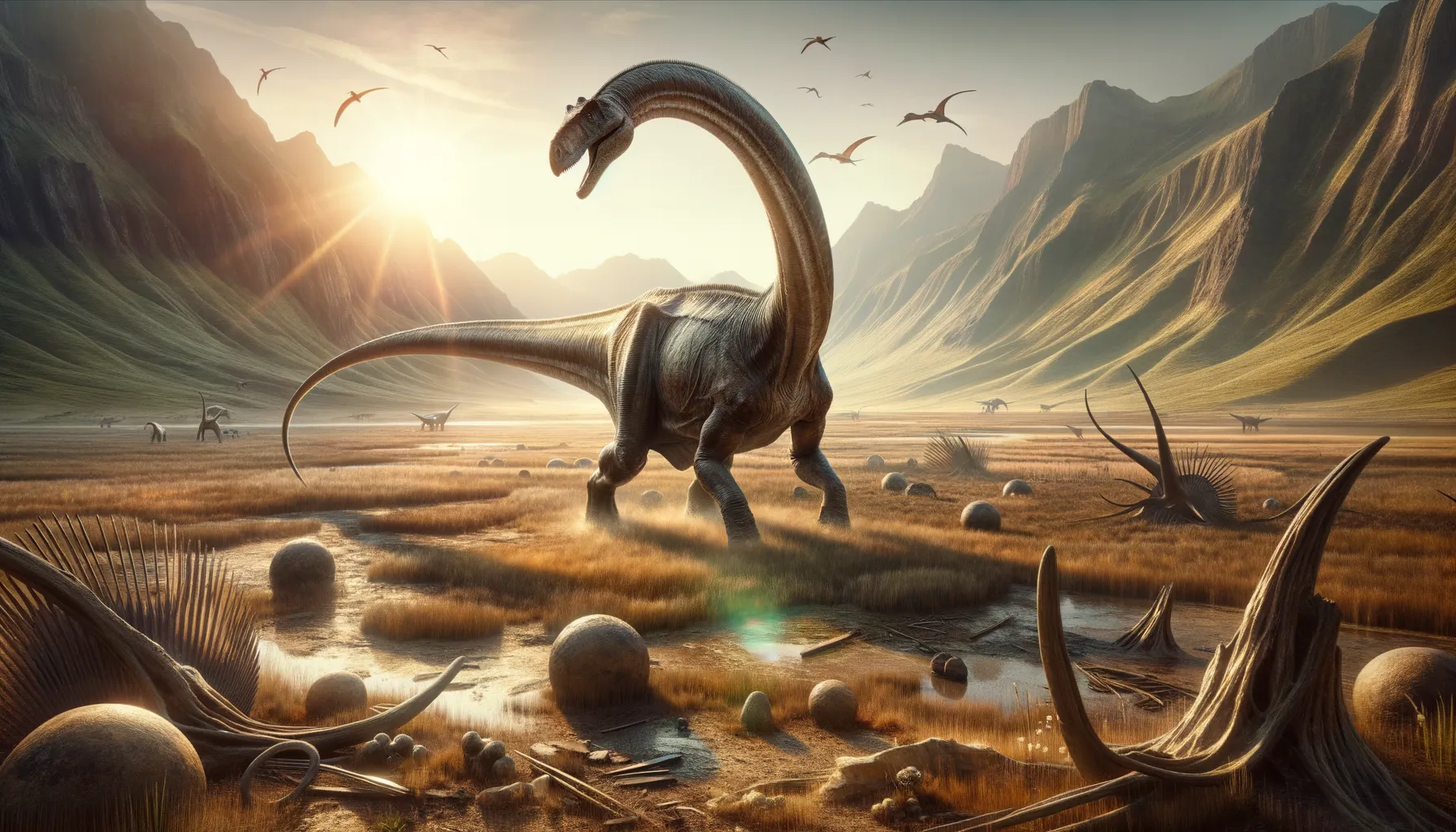
Tambatitanis
Giant of the Jurassic Japan.
Period
Jurassic
Length
Estimated 15 to 20 meters long.
Height
Approximately 6 to 8 meters tall.
Weight
Around 10 to 15 tons.
Tambatitanis was a long-necked dinosaur that roamed the Earth during the Late Jurassic period. As a member of the sauropod group, it was known for its impressive size, which made it one of the giants of its time. Discovered in what is now Japan, Tambatitanis has provided valuable insights into the spread and evolution of sauropods across ancient landmasses. Its fossils help paleontologists understand more about these fascinating and colossal creatures.
Diet
Tambatitanis was a herbivore, feeding primarily on leaves and other plant materials. It used its long neck to reach vegetation high in trees, much like a modern-day giraffe.
Hunting
Being a herbivore, Tambatitanis did not hunt. It likely spent much of its time foraging for food in its lush environment.
Environmental challenges
Tambatitanis faced environmental challenges such as changes in climate and possible competition for food resources. During the Jurassic period, the world underwent fluctuations in temperature which could have affected plant growth and distribution. Predators also posed a threat to juvenile tambatitanis, necessitating adaptations for survival.
Speed
Likely slow due to its massive size as a sauropod.
Lifespan
Estimated to be several decades, similar to other large dinosaurs.
First discovery
Discovered in Japan in the 21st century.
Fun Facts
- Tambatitanis was a long-necked dinosaur that lived during the Early Cretaceous period, about 130 million years ago.
- Fossils of Tambatitanis have been found in Japan, providing valuable insights into dinosaur life in Asia during the Cretaceous period.
- This dinosaur was herbivorous and its long neck likely helped it reach for leaves high in trees.
- Tambatitanis is known for its distinctive vertebrae, which paleontologists use to differentiate it from other sauropods.
- Despite its massive size, Tambatitanis likely had relatively small teeth, perfect for stripping leaves rather than chewing them.
- The name Tambatitanis means 'Tamba giant', named after the Tamba region in Japan where it was discovered.
- Being a sauropod, Tambatitanis was related to some of the largest dinosaurs ever to roam the Earth.
Growth and Development
Tambatitanis would have gone through a rapid growth phase, especially in its early years, to reach its massive adult size. This growth required a plentiful supply of food, and the dinosaur's body was adapted to process large volumes of plant material efficiently. As it matured, its growth rate likely slowed, allowing for a longer lifespan typical of large sauropods.
Habitat
Tambatitanis lived in a habitat that likely included forests and open land with plenty of vegetation to support its diet. The area which is now Japan was part of a larger landmass with diverse ecosystems during the Jurassic period. This environment was ideal for supporting large herbivores and their ecosystems.
Interaction with other species
Tambatitanis shared its environment with various other dinosaur species, some of which might have been predators. It likely interacted minimally with them due to its size, which served as a deterrent against potential predators. Competition with other herbivores would have been more common, particularly for food resources.
Natural lifespan
Tambatitanis could have naturally lived for several decades.
Reproduction
Tambatitanis reproduced by laying eggs, likely in carefully chosen and perhaps communal nesting sites. The young would have been relatively small at hatching, requiring rapid growth to reach adult proportions. Parental care might have been limited, with juveniles needing to fend for themselves from a young age.
Social behaviour
Tambatitanis may have lived in herds or loosely associated groups for protection and social interaction, common among large herbivores. These group structures could provide safety in numbers, especially for the young and juvenile members.
Fossil locations
Fossils of Tambatitanis have been found in Japan, providing crucial evidence of sauropod presence in Asia during the Jurassic period. These discoveries help fill in paleontologists' understanding of dinosaur distribution and evolution across ancient continents.
